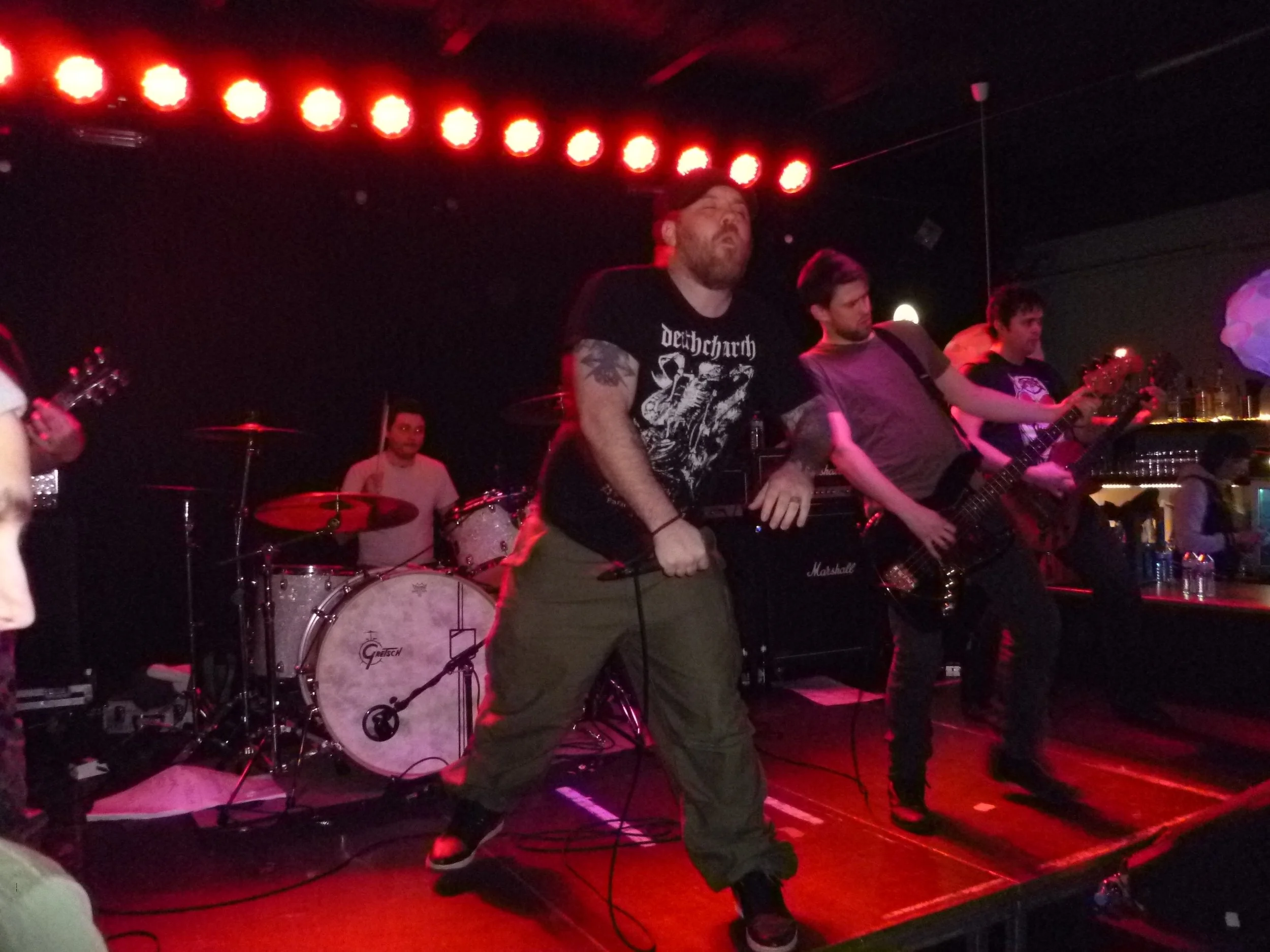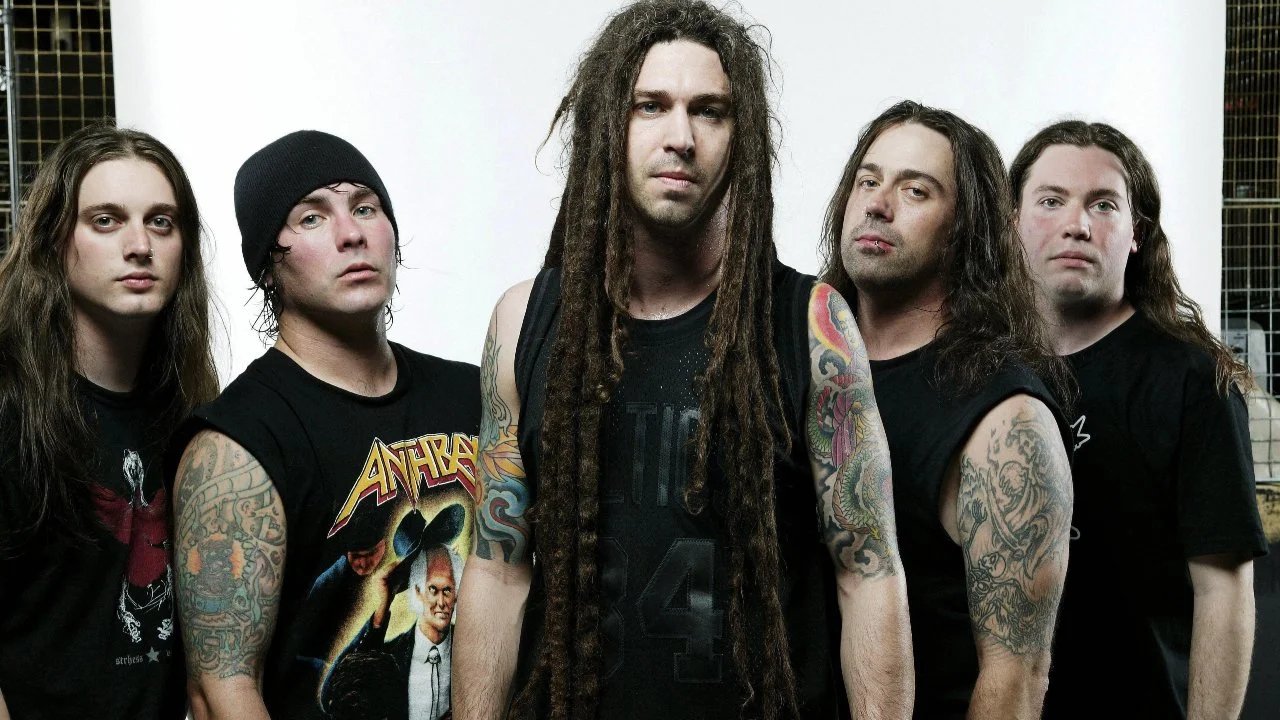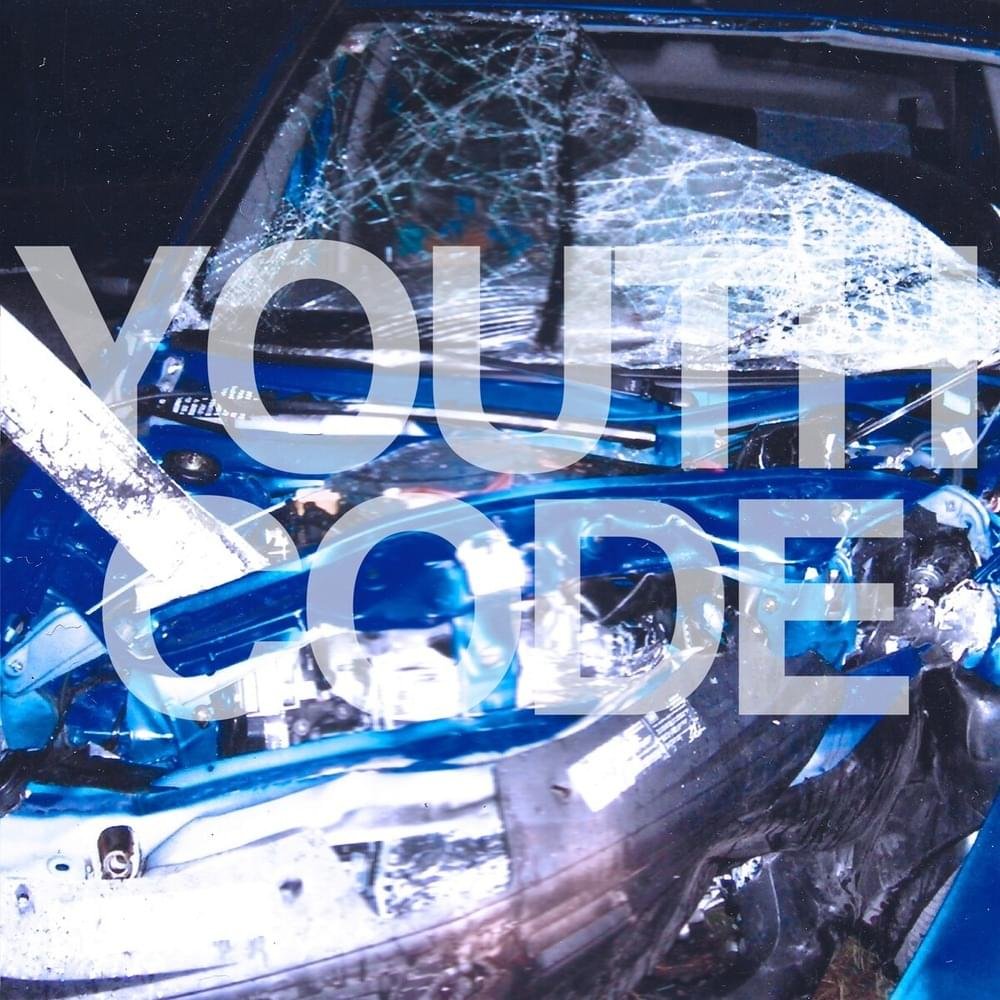A Subjective History of Metalcore
When Tony Iommi accidentally invented heavy metal by severing his fingertips in a Midlands factory, he wasn’t trying to rebel against the music establishment. The idea of that establishment itself was a lot leaner and amorphous than it is today. He just wanted to keep his job and keep playing guitar, even if that meant welding prosthetic thimbles onto his mangled fingers and downtuning his strings until they sounded like the Earth groaning under the weight of its own regret.
His goal was modest: to play a gloomier, blues-based version of psychedelic rock that sounded like Hammer horror films and felt like getting laid off by age twenty-three. But somewhere along the way, metal mutated into the problem child of popular music. Not a genre. A deviant. A delinquent. Something too pissed off to play nice with disco or too weird to blend in with punk. Metal didn’t want to be cool.
Metal wanted you to know that you weren’t cool. That was the point. You can’t scream about the darkness inside you and still get invited to pool parties.
The genre took a weird turn about fifteen years in or so. Technical skill had always mattered, but somewhere along the line—maybe around the time tempos doubled and solos got harder to air-guitar. It stopped being a feature and became the whole point. Bless his soul, but Death’s Chuck Schuldiner was instrumental of perpetuating the myth that metal musicians were all misunderstood geniuses from early on, a myth is mostly believed and perpetrated by metal musicians themselves
Metal always had ties to punk, but they were more like awkward handshakes than actual bloodlines. Slayer borrowed plenty from D.C. hardcore (Reign in Blood practically sweats punk energy) but they were still very much a metal band: solos, structure, and ambitious compositions.
For a long time, nobody was really mixing the two in a way that felt organic. Not until metalcore emerged in the late ‘80s and early ‘90s, when a new wave of bands reminded everyone how fun it is to just play hard and be furious. No artifice. No capes. Just riffs and rage. So here it is: my completely subjective history of metalcore, a genre I’ve always held close to the chest like a well-worn band tee that still smells like the pit.
A Matter of Integrity
Metalcore doesn’t really have a prehistory to properly speak of. Just a murky primordial soup of pissed-off bands pushing boundaries before they knew there were boundaries to push. Bad Brains and Black Flag were already bending hardcore into strange shapes by the early ‘80s. Black Flag, in particular, went full existential sludge at times, slowing their tempos and stretching their songs into something that felt less like punk and more like a depressive episode.
Some people say they invented sludge metal. Others swear it was The Melvins. The truth is probably somewhere between a bad acid trip and a broken bass amp.
As for metalcore itself, no one knows exactly who started it, but we know it’s either Integrity and Ringworm. Both are from Cleveland, which is not a coincidence. Cleveland is the kind of place where metalcore had to happen: industrial, overlooked, and spiritually allergic to glam. Both bands were clearly raised on the frantic innovation of Bad Brains and the bruised minimalism of Black Flag, but wanted something heavier, something that could grind as well as gallop.
So no, we don’t know who invented metalcore. But we know where it happened and that matters just as much.
The idea was simple: metal that felt personal without getting weepy, cathartic without turning into therapy rock. Solos were out. Nasty-ass breakdowns were in. This wasn’t just music you listened to, it was music you braced for. Metalcore wanted to be introspective without being melodramatic , which is adorable, in hindsight, given where it all ends up, but don’t worry, we’re not there yet.
At its core, this was still fight music. Slayer and Pantera had already normalized the breakdowns, those slow, stompy sections where everything sounds like a bar fight in slow motion, but metalcore made them structural. They weren’t moments anymore. They were blueprints.
Original metalcore doesn’t sound anything like the bands that get lumped into the genre today. There was almost no melody, just chugging riffs and vocals that weren’t quite growls but came out hoarse, raw, and unmistakably man-shaped.
Early metalcore wasn’t about polish. It was the bastard child of beatdown hardcore, born from guys who still wanted to throw down, but were sick of recycling the same three riffs and shouting motivational slogans like angry gym teachers. In the beginning, metalcore shared more DNA with street-level hardcore than it did with anything melodic or technical. That would change. But early on, it was just pissed-off dudes trying to play heavier without getting stupider.
It’s called metalcore because it was metallic hardcore after all.
Unlike for other genres, there were many active bands early in the scene. There was Earth Crisis, your not-so-friendly neighborhood straight-edge vegans who blazed the path with their seminal album Firestorm. The ghoulishly named Starkweather from Philly, Boston’s Overcast, credited with inventing metalcore by some and, of course, Converge, who spent a solid decade quietly melting faces before Jane Doe finally turned them into a household name for music snobs like us.
Botch gets grouped in here too, even if their real contribution was breaking metalcore's brain and turning it into mathcore, a whole separate species we’ll get to in another chapter. Think of this era as the unstable chemical reaction. The explosion’s still coming. But seriously, listen to Firestorm. It’s awesome. It stills holds up as one of the ten best metalcore records today.
At the Gates Core and Metal’s Last Commercial Hurrah
Between 1995 and 2002, metalcore went through what scientists might call "a lot of shit."
One of the biggest shifts came when someone, no one knows exactly who, but I’d put money on Matt or Jon from Shadows Fall, got their hands on Slaughter of the Soul by At the Gates. And everything changed. That album didn’t just define melodic death metal, it accidentally jump-started a whole new branch of metalcore. Almost overnight, choruses were sang with clean vocals, riffs became tighter and more melodic and other influences percolated into the equation. Notably big, athemic arena rock.
Think of it as the birth of what YouTube pariah Finn McKenty now calls "At the Gates-core.'" And regardless of what you think of him, the label sticks. That album was basically ground zero for melodic metalcore, even if no one knew it at the time. An inception moment, wrapped in blast beats.
Some of the biggest names in metalcore came out of this melodic wave, and for a lot of people, these bands were the entry point. Killswitch Engage were basically the Metallica of the whole operation: hugely influential, kind of corny in hindsight, but undeniably good at what they did. They perfected the growl-clean-growl formula and wrapped it in melodic riffs, introspective lyrics, and just enough romantic angst to feel deep without being depressing.
Then came the southern Christians. August Burns Red took their cue from Killswitch and dialed up the technicality, like they were trying to win salvation through precision. And, of course, there was As I Lay Dying, who played a huge role in popularizing the genre before vocalist Tim Lambesis decided to become the Jared Leto of evangelical murder plots. Problematic legacy? Absolutely. But their impact? Also undeniable.
You could also put Avenged Sevenfold in there, although their legacy is a little murkier. They’ve started as a metalcore bands, but delved into more of a Guns N’ Roses inspired heavy rock approach later and then went completely Devin Townsend on us. It’s easy to write them off as teeny-bopper bait, but that’s too simplistic. Avenged Sevenfold were good (sometimes really good) but they were tourists in metalcore.
They never wanted to live there. Being big always mattered more to them than belonging to a scene. And in a way, that’s part of the story too. Because for every band trying to push the genre forward, there was one trying to escape its pull entirely. Anyway, these bands were hugely popular thanks to MySpace and kids who were not quite comfortable in being labeled emo. Nü metal was the last mass market success for metal, but metalcore was the last time the genre tapped into youth culture.
Other bands I would hate not to mention: Underoath, Misery Signals, Asking Alexandria, Australia’s Parkway Drive, Architects, Bullet for My Valentine (who somehow survived nü metal) and I Killed the Prom Queen. I still enjoy Shadows Fall more than all of these bands, but thatI’just me gatekeeping at a nanocellular level. Move along.
The Other Metalcore Also Thrived
Metalcore got super commercial in the late ’90s and early 2000s. But it also… didn’t.
Because while some bands were chasing radio play and Hot Topic shelf space, others were busy making metalcore too weird to sell. This is where the lines between metalcore and mathcore start to blu In 1999, Dillinger Escape Plan dropped Calculating Infinity and made everyone reconsider what the metalcore could be. Or whether it was even still a genre.
Personally, I draw the line like this: if your band changes tempos and time signatures just to prove you can, that’s mathcore. If you write songs because you still believe songs matter. Because there’s something you need to get out, you’re doing metal. Which brings us to one of my favorite bands of all time: Converge.
Jane Doe wasn’t Converge’s fourth record, but it was the first to feel like a nuclear heart attack. It didn’t just sound like a breakup; it sounded like the breakup, the one where you still love the person and hate yourself for not being enough. There’s nothing coy about Jane Doe. It’s bloodletting set to blast beats and Kurt Ballou’s twisty, turvy riffs. It’s one of the 10 or 15 best metal albums ever recorded, and one of the clearest examples I’ve ever found of an album functioning as actual art.
Art meaning it drags you through something personal until it becomes collective.
Converge has been just as good ever since, particularly on All We Love We Leave Behind (2012) and The Dusk in Us (2017). They’re maybe the best band on Earth at turning emotional pain into sonic violence, thanks in large part to Jacob Bannon’s voice. A sound so shredded by grief and fury it makes you feel like you’re the one who lost something permanent.
Converge weren’t the only ones who stayed weird and uncompromising while everyone else was polishing their choruses. Poison the Well deserves a place on that same pedestal. They were always proggier than Converge, less feral, more expansive, and they leaned harder into melody without ever cashing out their aggression. Albums like The Opposite of December and Tear From the Red felt like emotional architecture: angular, moody, and built to collapse under their own weight in just the right places.
The Devil Wears Prada followed a similar arc, though their reputation hasn’t aged as gracefully. They started off impossibly chaotic. Dear Love: A Beautiful Discord is basically a metalcore migraine, but got more refined (and, yes, softer) as they matured. Still, they kept a foot in the emotionally heavy world even when their sound lightened.
You could also throw in bands like Norma Jean, whose debut Bless the Martyr and Kiss the Child was an absolute mess of Biblical fury and mathy breakdowns, and Zao, who brought a raw, near-theological sense of despair to the genre years before it was fashionable. These were bands that didn’t just play heavy, they felt heavy, in ways that couldn’t be faked. Between the Buried and Me are the resident prog nerds of metalcore, but I would count them part of this group.
These bands spawned a whole generation of spiritual offspring. Kids who still keep the pit dangerous and the songs just emotional enough for the tough guys to pretend they’re not crying. Grindcore titans Full of Hell have name-dropped Converge as an inspiration more than once, even though Spencer Hazard could probably write a riff inspired by recording his fridge and pitching it down three octaves. Brendan Murphy is carrying the torch too: Counterparts for the sad kids, END for the ones who want to leave the show with a broken nose and some spiritual clarity.
You could also lump in Jesus Piece, who sound like they’re trying to cave in the venue’s foundation on every track, and Polaris, who blended melody and muscle beautifully before tragedy struck with Ryan Siew’s passing. These bands didn’t reinvent the genre, but they reminded us what it could feel like when the formula is handled with reverence—and a little fresh blood.
The Unarguable Importance of Scenecore
Remember when I said everything important in metalcore happened between 1995 and 2002? That was barely hyperbole—just time-stamped foreshadowing.
Right at the tail end of that golden window, a band emerged that could only have come from Orange County, California: Eighteen Visions. And instead of redefining metalcore’s sound, they went straight for the wardrobe. Out went the Cleveland-style cargo shorts and basketball jerseys, garments that screamed "I might stab you but I’ll apologize after." In came skinny jeans, white belts, flat-ironed bangs, and the kind of glam-dripping stage presence that made Cleveland tough guys choke on their protein shakes.
They were metalcore, sure, but metalcore with eyeliner. The whole scene started flirting with emo, which makes sense when you remember that emo was born from the same D.C. hardcore scene that shaped Bad Brains and Minor Threat. It wasn’t a total crossover yet but the kids were already swapping patches.
What followed was a strange era of metalcore. Sometimes inclusive, often wildly abusive, where the lyrical content shifted from spiritual rage and existential panic to something closer to the livejournal confessional. Suddenly, it wasn’t just about empowerment through struggle, it was also about how your girlfriend was a ho for cheating on you and your dad didn’t understand your tattoos.
This is why Bring Me The Horizon doesn’t look anything like Jesus Piece or Killswitch Engage. They’re scene kids who booked a one-way trip into metalcore but brought their own fashion sense and emotional vocabulary. If Killswitch and Jesus Piece are estranged brothers raised in separate households, one Christian, one nihilist, Bring Me is their stylish, younger cousin who shows up late to the family reunion in a mesh shirt and asks where the ketamine is.
Some of them leaned toward a more user-friendly sound. Others sounded like an emotional car crash inside a haunted circuit board. But the uniting thread of scenecore wasn’t sonic, it was ambition. These bands wanted to succeed, not keep it real, whatever either of those things meant in a Myspace-fueled ecosystem.
The key takeaway from the scene years is this: bands started taking creative liberties with metalcore’s skeletal structure. Clean vocals, synths, autotuned bridges, orchestral swells, spoken-word diary entries, whatever it took to stand out in a crowded feed. This era gave us some genuinely innovative moments… and also Brokencyde, the musical equivalent of a head injury in a Hot Topic dressing room.
Among the defining bands of the scenecore boom were Attack! Attack!, yes, the inventors of crabcore, a synchronized, wide-legged squat move that turned breakdowns into performance art. Then came Asking Alexandria, A Day to Remember, The Devil Wears Prada, I See Stars, and Motionless in White, who blended metalcore with synthpop, deathcore, and whatever else was floating around on LimeWire.
Slightly more intense, but still very scene-coded, were bands like We Came As Romans, The Amity Affliction, and Of Mice & Men, who skewed heavier emotionally and sonically but still wore the eyeliner and heartbreak on their sleeves.
I don’t have a deep personal affection for this chapter of metalcore (too much sugar, not enough dirt) but it undeniably set the stage for the genre’s next evolution. The groundwork was laid. All it needed was a mainstream catalyst, which came in 2013, when Bring Me The Horizon dropped Sempiternal and changed the conversation completely.
Octane Core and Where We Are Today
So yeah. In 2013, Bring Me The Horizon’s Oli Sykes asked the rhetorical question: "What if we all stopped acting like fake tough guys and admitted we secretly love Kelly Clarkson?"
And honestly? He wasn’t wrong. But what he did was bigger than a confession. He triggered the Pokémon evolution of scenecore: Octane Core. Named for SiriusXM’s testosterone-dripping hard rock station, Octane Core is metalcore’s glossy, overproduced, stadium-leaning cousin. It’s what happens when metal bands start using pop structures and EDM textures to craft songs that hit like breakdowns but feel like club anthems. I’m not talking Thriller or 1989. I’m talking big, tattooed men doing their best Chainsmokers and 21 Pilots impressions in drop C.
Suddenly, Architects became more than just melodic, they got cinematic. A Day to Remember doubled down on their love for pop-punk ballads and arena-ready choruses. Falling in Reverse showed up like a glitch in the matrix, part Linkin Park, part SoundCloud rap, part Vegas residency. The riffs were still there. So were the breakdowns. But they now came with AutoTune, electronic flourishes, and Spotify-friendly hooks you could belt in your car.
Take Spiritbox, for example. Mike and Courtney from iwrestledabearonce decided one day they liked eating three meals a day and sleeping in actual hotel rooms on tour, so they traded chaos for clarity and formed a band that’s catchy AND cathartic. UK’s Loathe caught wind of the TikTok-driven Deftones resurgence and painted it in their own colors—sounding like shoegaze with a personal trainer.
There’s Code Orange I don’t dislike either, but I’m not sure where they fit in all this.
Say what you want about it, but Octane Core is accessible. It’s inclusive. You don’t need a PhD in Meshuggah or a tolerance for gutteral frog vocals to get into it. And honestly? That’s important. Metal, like drugs, needs its gateway genres. That leads us to bands I don’t get at all like I Prevail, Bad Omens and Sleep Token who are arguably the forerunners of the genre. While listening to their music should count at a form of torture under the Geneva convention, they’re riding Chino Moreno’s horny train better than anyone.
And it’s all good. Metalcore was never about purity, it was about transformation. Breakdowns instead of solos. Feelings instead of posturing. Melody without surrender. And every time it gets stale, someone somewhere finds a way to make it dangerous again.So that’s where we are today. Before I leave you, here are five songs to help you get a good feel for metalcore. It’s a complicated one to wrap your head around.
Earth Crisis - Firestorm : It’s bouncy and chuggy, sure, but denser, more intricate, and delivered with a militant sense of purpose. Where beatdown songs swing fists for the pit, Earth Crisis adds 50% more environmentalism and 100% more conviction. It’s not just about smashing faces, it’s about burning down the whole rotten system.”
Killswitch Engage - Rose of Sharyn : A fiery, romantic lament disguised as a mosh anthem—an open wound in 4/4 time. It’s part radio rock, part true-blue metalcore, marrying soaring hooks with galloping riffs and breakdowns that still know how to cry a little. This is about as polished and accessible as At the Gates-core ever got, without losing the heartache at its core.
Converge - Homewrecker : A raw, heartbroken menace. Less a song than a violent exorcism. It doesn’t build; it detonates. Jacob Bannon tears through the track like a man trying to claw his way out of his own skin, delivering jagged, unfiltered emotion with terrifying clarity. It’s one of those "fuck it, the day couldn’t get any worse" anthems. Perfect for full-volume catharsis when you want the world to hurt as much as you do
Bring Me The Horizon - Can You Feel My Heart : The song that flipped metalcore on its head and dragged it into the era of big feelings and bigger choruses. More EDM than breakdown, it trades guitars for synths and rage for vulnerability. Oli Sykes sounds like he’s breaking down on the mic, and it works. You don’t mosh to this, you scream it alone in your car at 1 a.m. This is where metalcore stopped pretending not to feel.
Loathe - Is It Really You? : Maybe the most Octane Core song I can think about that I actually like. Spiritbox feels closer to the hardcore roots of metalcore, but Loathe? They’re on another wavelength. Dreamy, polished, almost post-everything. Still, it’s a fun, unifying singalong. The power of a good chorus, man. You can’t argue with that.
* Follow me on Instagram and Bluesky to keep up with new posts *











